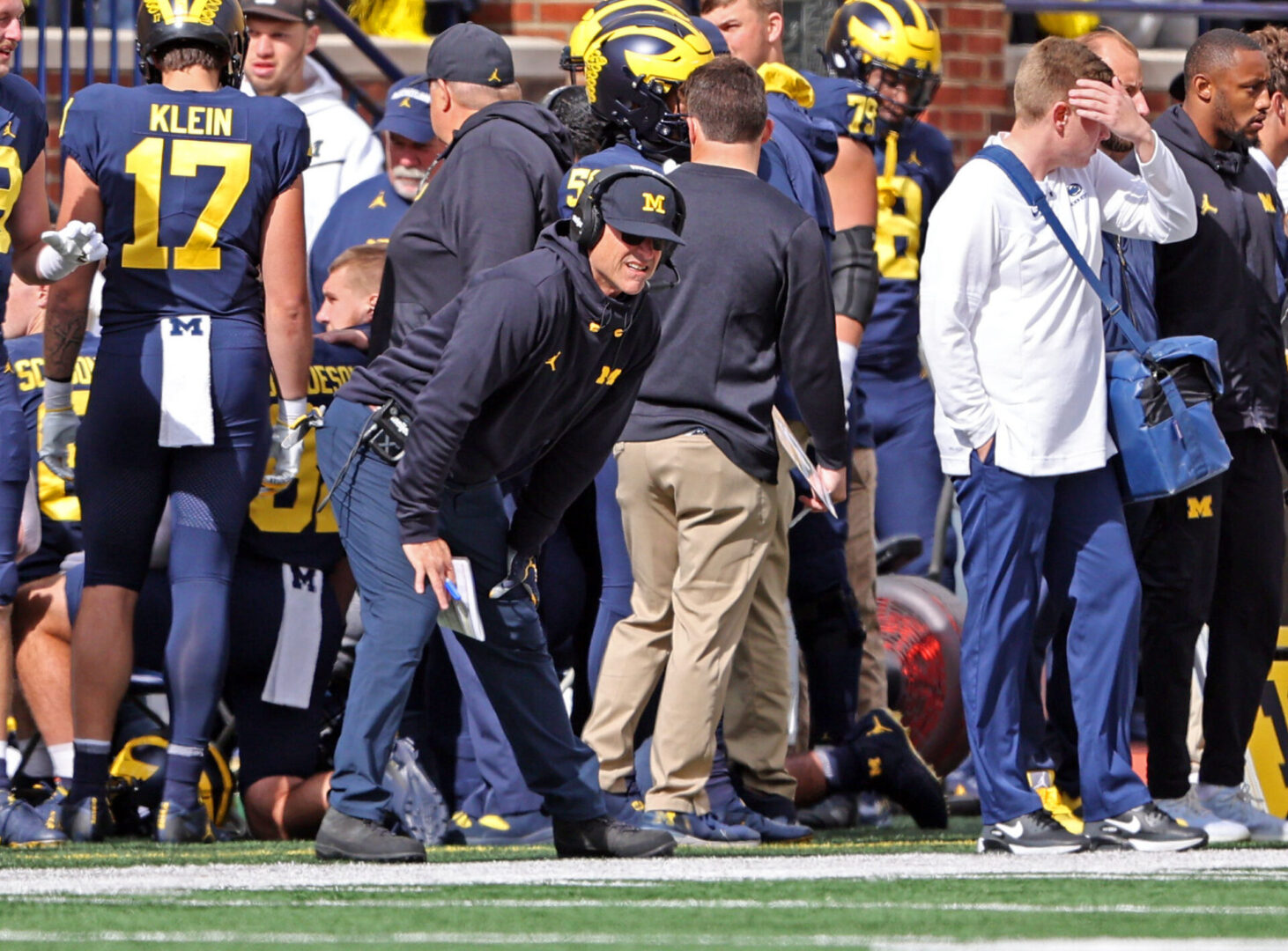As a graduate assistant coach at the University of Virginia in 1992, I was watching a Florida State game a few weeks before we would be playing them. As FSU’s no-huddle offense was going up and down the field, I noticed their quarterback, Charlie Ward, using hand signals to relay play calls to his teammates.
As the game wore on, the repeated use of certain signals tipped off what plays were coming. A friend was over watching the game. Without telling him that the signals were a giveaway, he was amazed by the accuracy I predicted plays before they happened.
This week the allegations of sign stealing at the University of Michigan has some in the media world in mock horror at the idea that people would steal other teams’ signals. Where Michigan is accused of violating NCAA rules is by allegedly scouting games in person, which has been prohibited since 1994. That’s not what we’re discussing here.
But let’s be clear, that scouting rule was not put in place because of ethics. It was put in as a cost-cutting measure at a time when controlling football spending was something that the NCAA and schools cared about. The NCAA limited staff sizes and enforced those limits, all in the name of containing costs. Obviously that era of fiscal responsibility is long past.
With the changing times and technology being what it is, it’s beyond time for the NCAA to allow teams to adopt the NFL’s electronic communication between coaches and players. That eliminates the need for signals.
The old argument was that outfitting the helmets and coaches would cost too much. That too has changed. Utilizing that technology now would do three things: eliminate sign stealing, save money and make gameday safer.
There are teams with three or four guys who signal in plays so they can confuse the other team’s attempts to steal the signs. Some teams have three or four people holding up big poster boards with more signs. And then there are the people holding up curtains behind the signal guys.
If you put the NFL helmet system in, all communication is verbal from microphone to the helmet headset. You also get those eight to 10 people off your sideline. Those are people who don’t fly to the game, stay in a hotel and eat meals on the road. That saves you money. It also means fewer people and less congestion on the sidelines, which makes the game safer with less potential for collisions as players go out of bounds.
But does stealing signs work? It sure does… to a point.
The night we first saw the FSU signals on TV, we only had seven or eight of their play signals. But we had a few weeks to study several TV tapes to figure some things out. Those tapes allowed us to match a big number of signals to the plays. The easiest signals to pick off were the screen play, the draw play, the power play, the wham play, the Y-option route and the wheel route.
Assuming they’d change the signals, the night of the game we worked through the first drive or two before we knew they had not changed them. After that we knew what was coming the overwhelming majority of the time. The defense held them to 13 points, well below their season average of 37 points per game.
Stealing signs helped, but when Charlie Ward was scrambling, you still had to make the tackle.
But is sign stealing ethical? It is part of the game. If your offense plans to gain an advantage by going without a huddle to keep the defense from substituting and wear them out, you’ve chosen to signal your plays.
There are risks in the opportunity costs of running a no-huddle offense. To gain a physical advantage, you put yourself at a communications disadvantage. Given the competitive nature of football, you should fully expect that your signals are fair game. You should assume someone is stealing your signs. And the way coaches, analysts and players switch schools, you’re a fool to think that your signals aren’t everywhere.
Football may not be rocket science, but it’s not checkers either. It is a chess match.
To protect yourself, you have to change the signals week to week. The next level move is to dummy signal one play and run something completely different. Those are counterintelligence maneuvers in football’s version of spy craft.
As long as the NCAA keeps gameday communication at the status quo, that level of spy craft will remain part of the game. After all, all is fair in love and war and on third and long.



